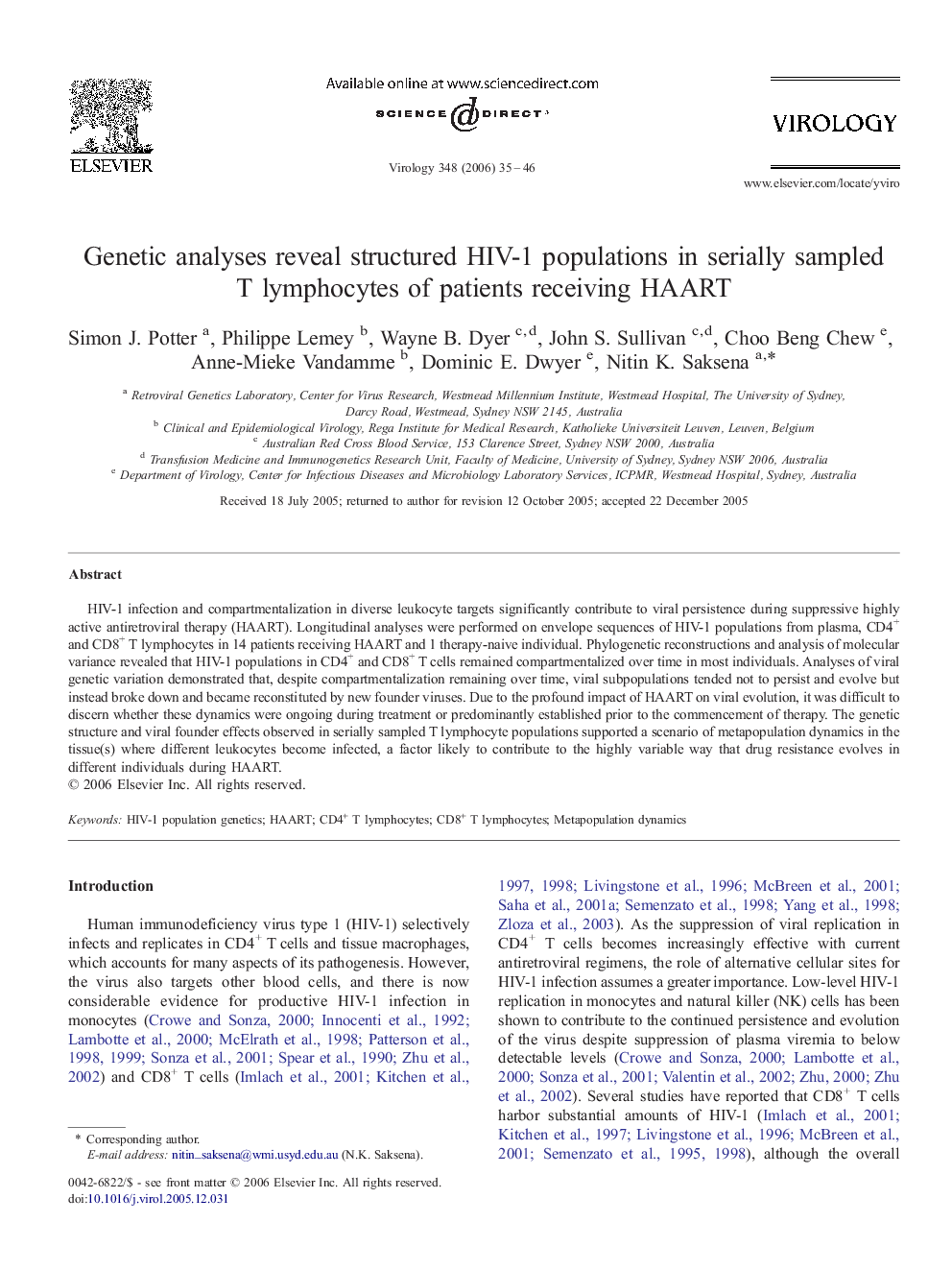| Article ID | Journal | Published Year | Pages | File Type |
|---|---|---|---|---|
| 3426954 | Virology | 2006 | 12 Pages |
HIV-1 infection and compartmentalization in diverse leukocyte targets significantly contribute to viral persistence during suppressive highly active antiretroviral therapy (HAART). Longitudinal analyses were performed on envelope sequences of HIV-1 populations from plasma, CD4+ and CD8+ T lymphocytes in 14 patients receiving HAART and 1 therapy-naive individual. Phylogenetic reconstructions and analysis of molecular variance revealed that HIV-1 populations in CD4+ and CD8+ T cells remained compartmentalized over time in most individuals. Analyses of viral genetic variation demonstrated that, despite compartmentalization remaining over time, viral subpopulations tended not to persist and evolve but instead broke down and became reconstituted by new founder viruses. Due to the profound impact of HAART on viral evolution, it was difficult to discern whether these dynamics were ongoing during treatment or predominantly established prior to the commencement of therapy. The genetic structure and viral founder effects observed in serially sampled T lymphocyte populations supported a scenario of metapopulation dynamics in the tissue(s) where different leukocytes become infected, a factor likely to contribute to the highly variable way that drug resistance evolves in different individuals during HAART.
